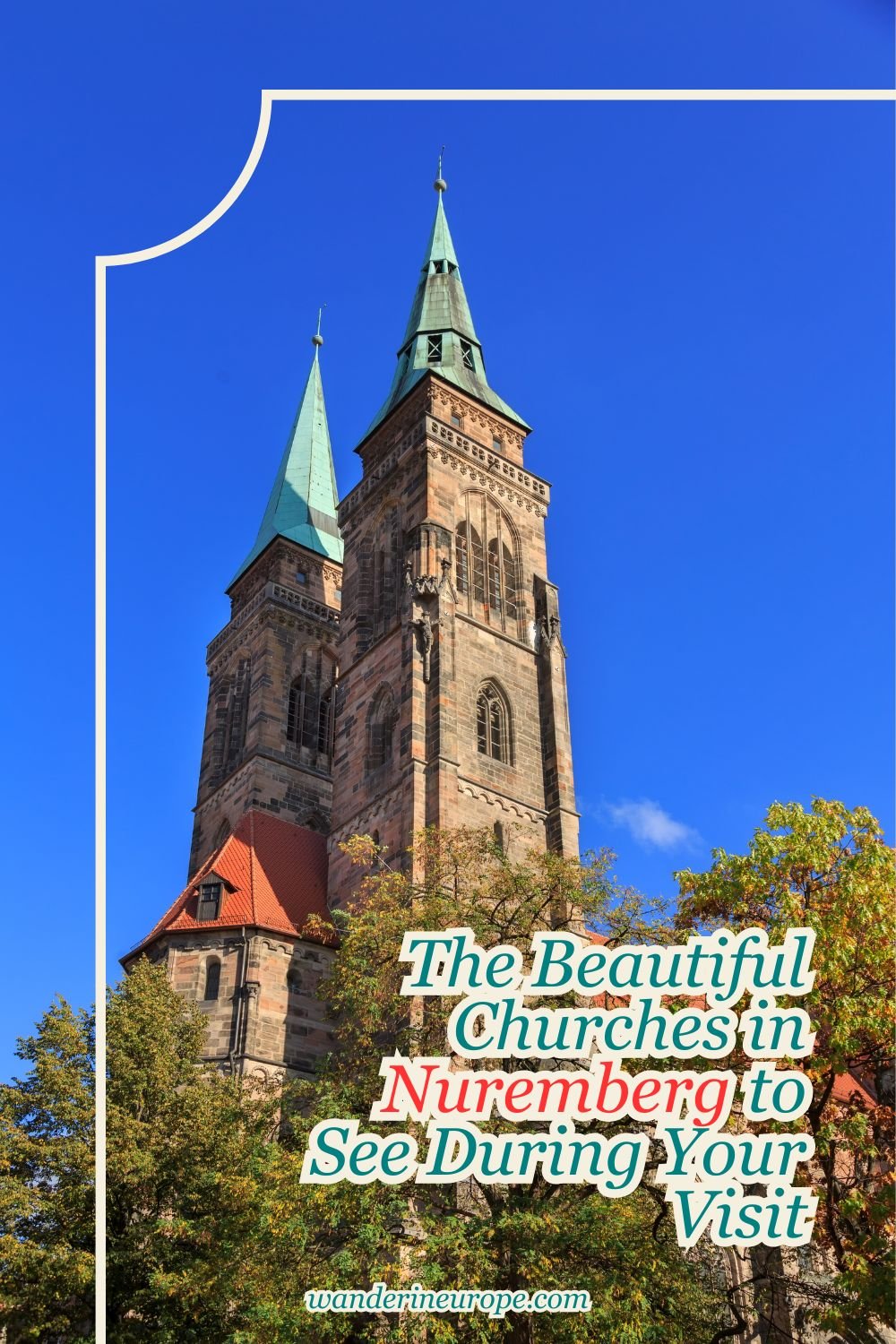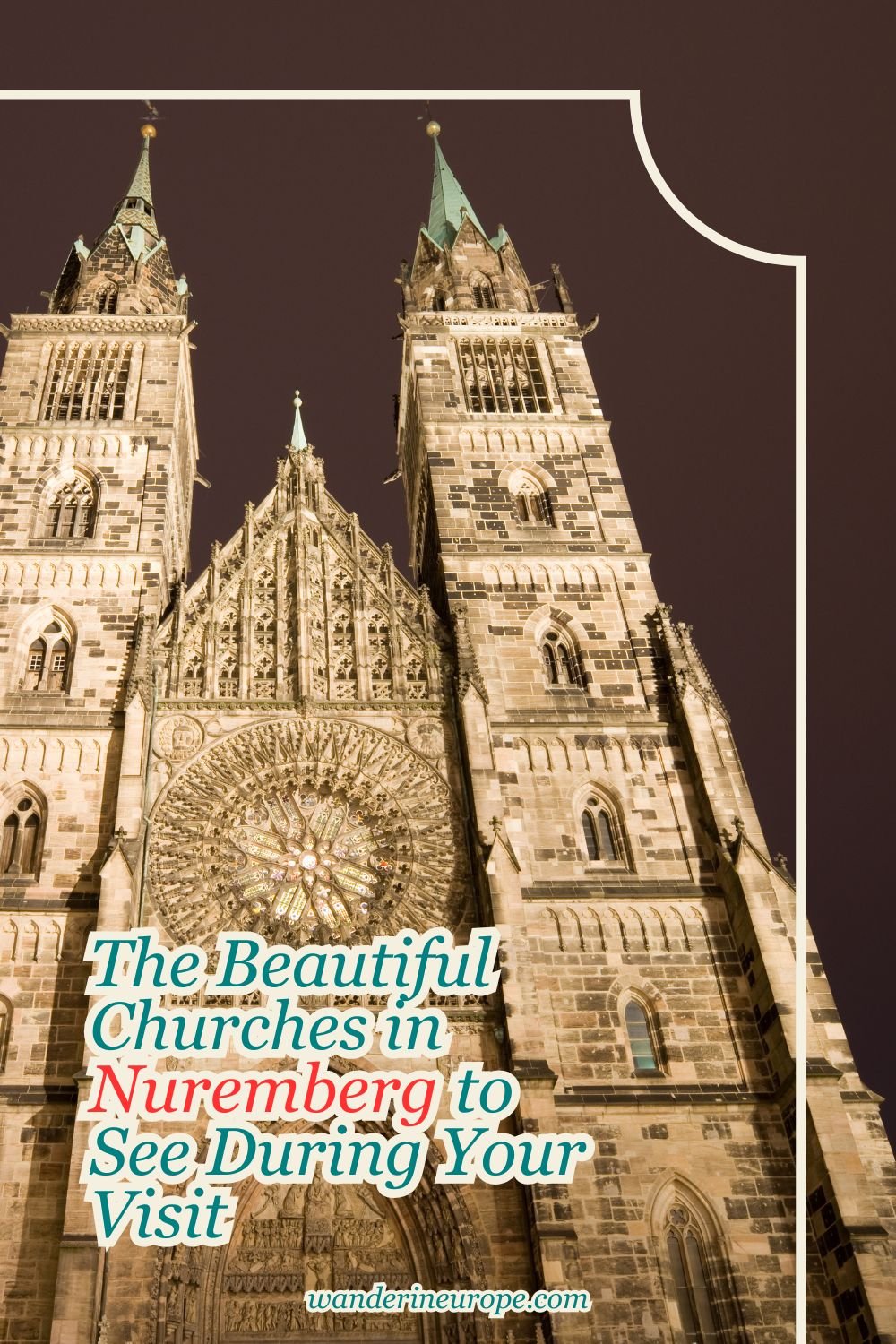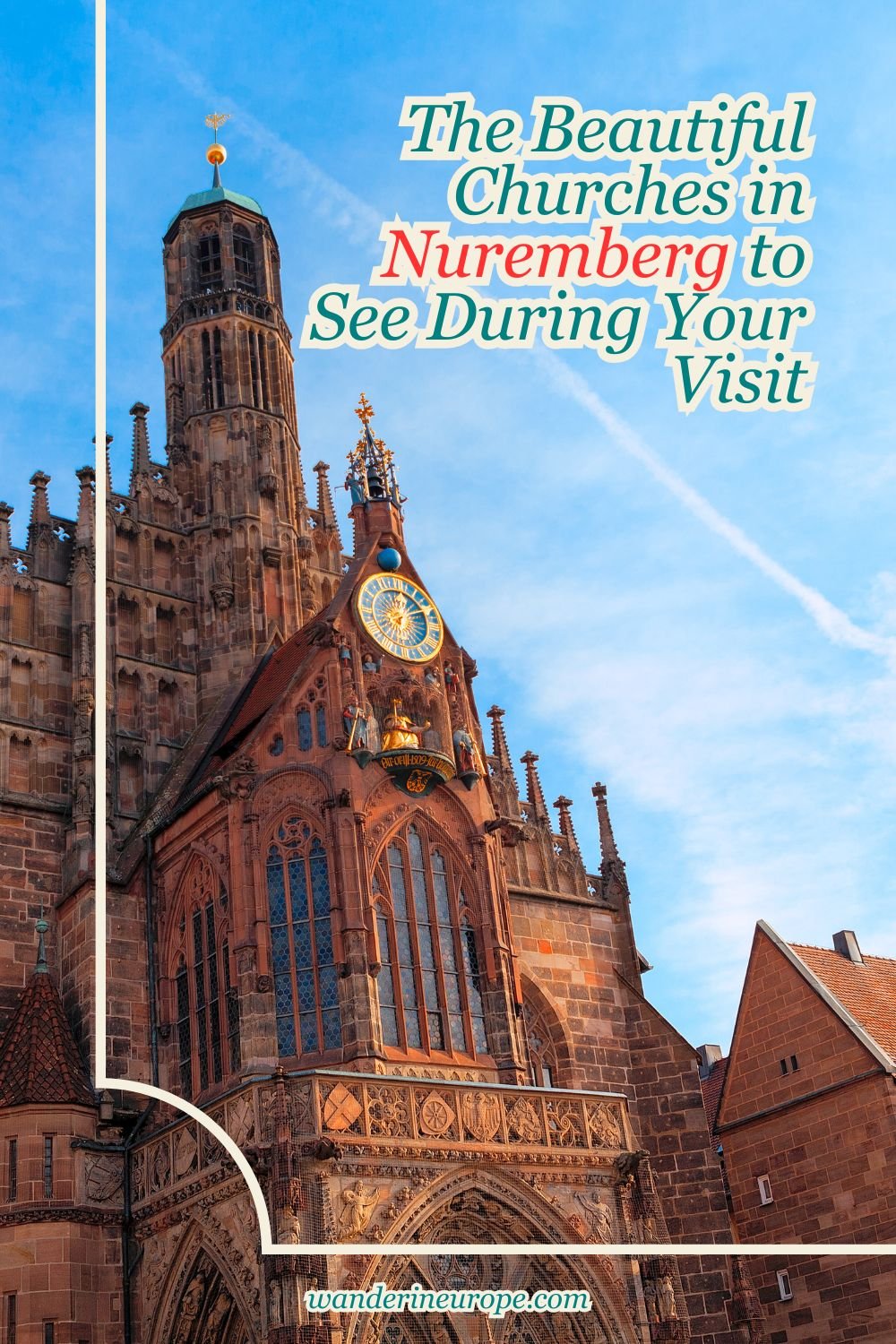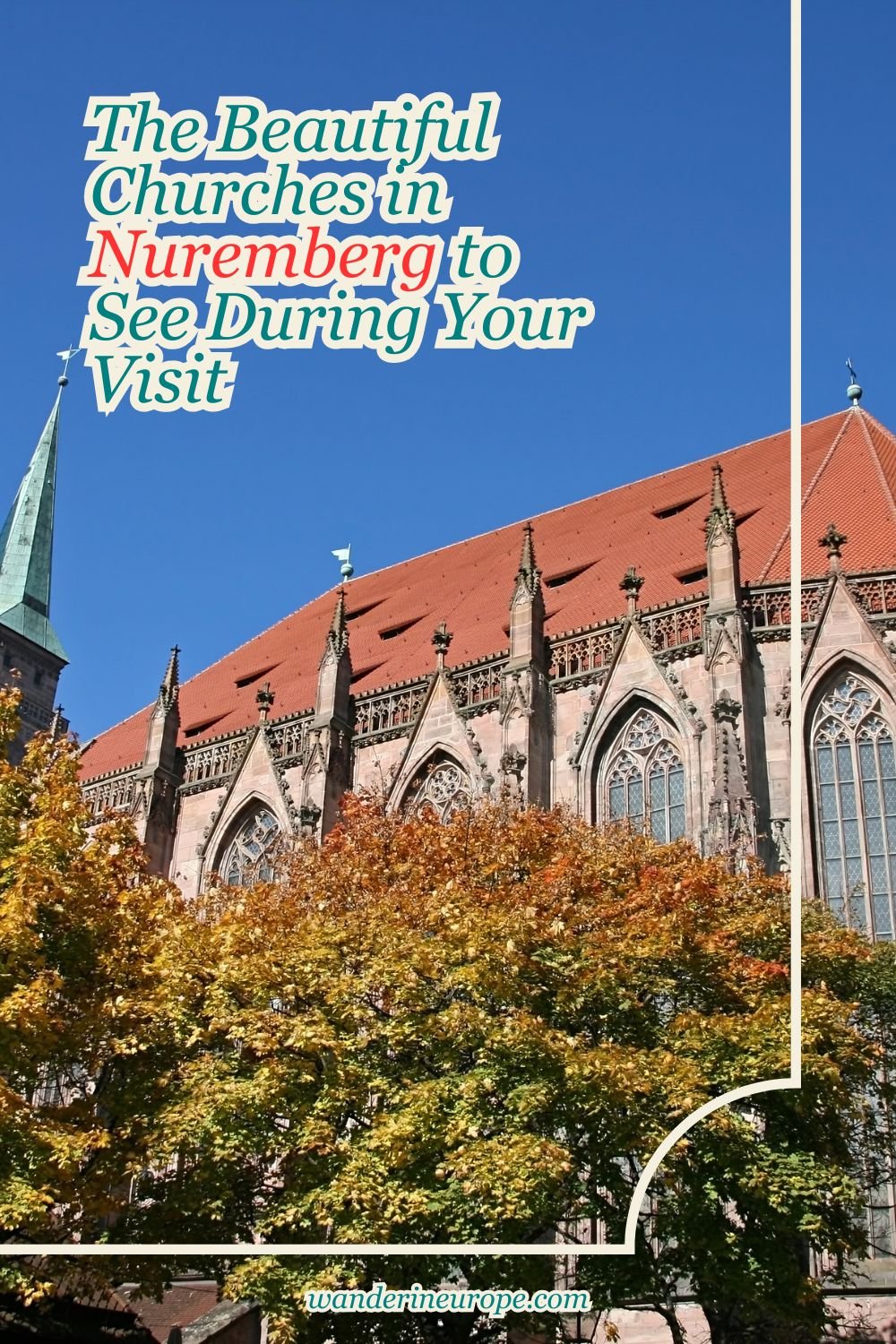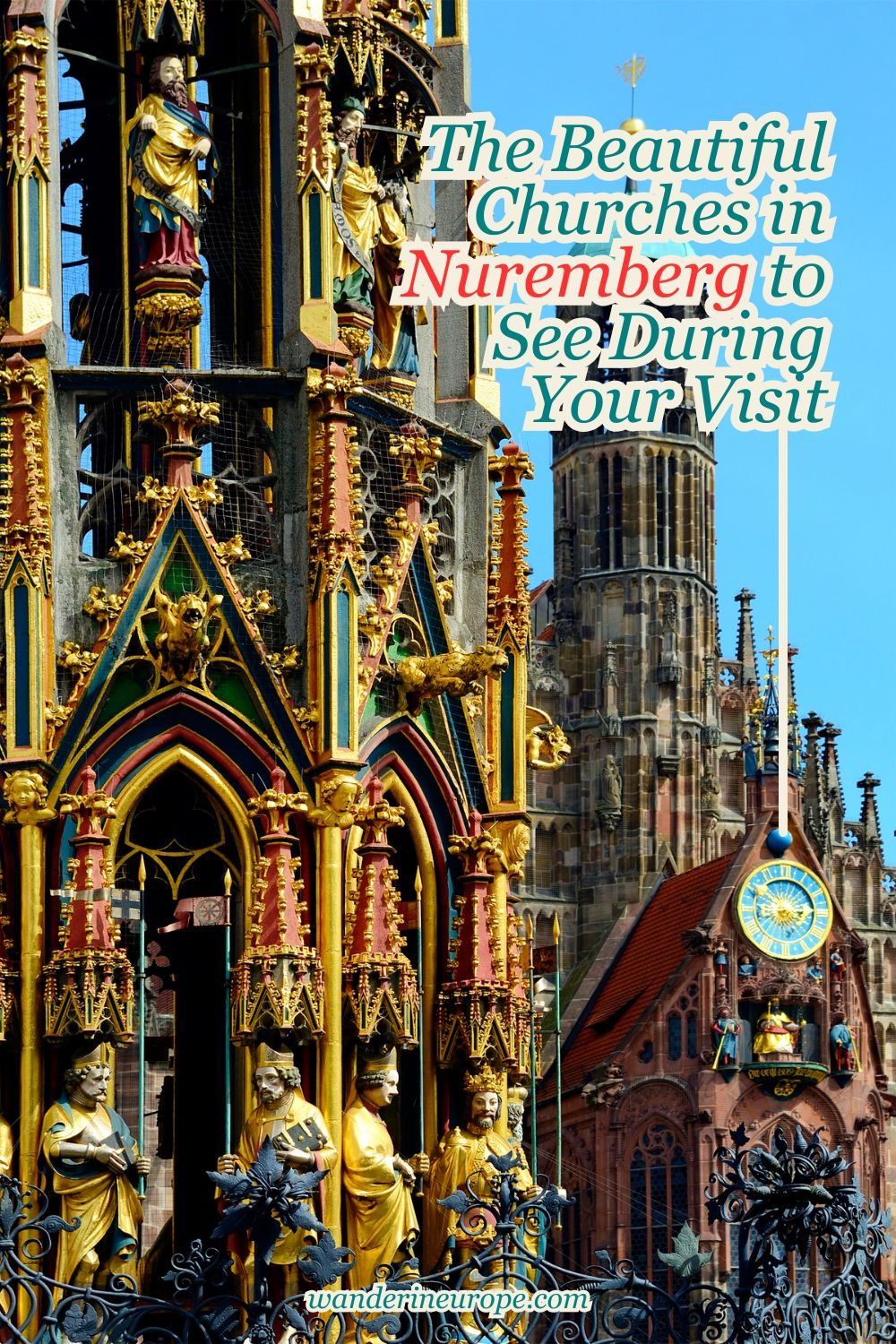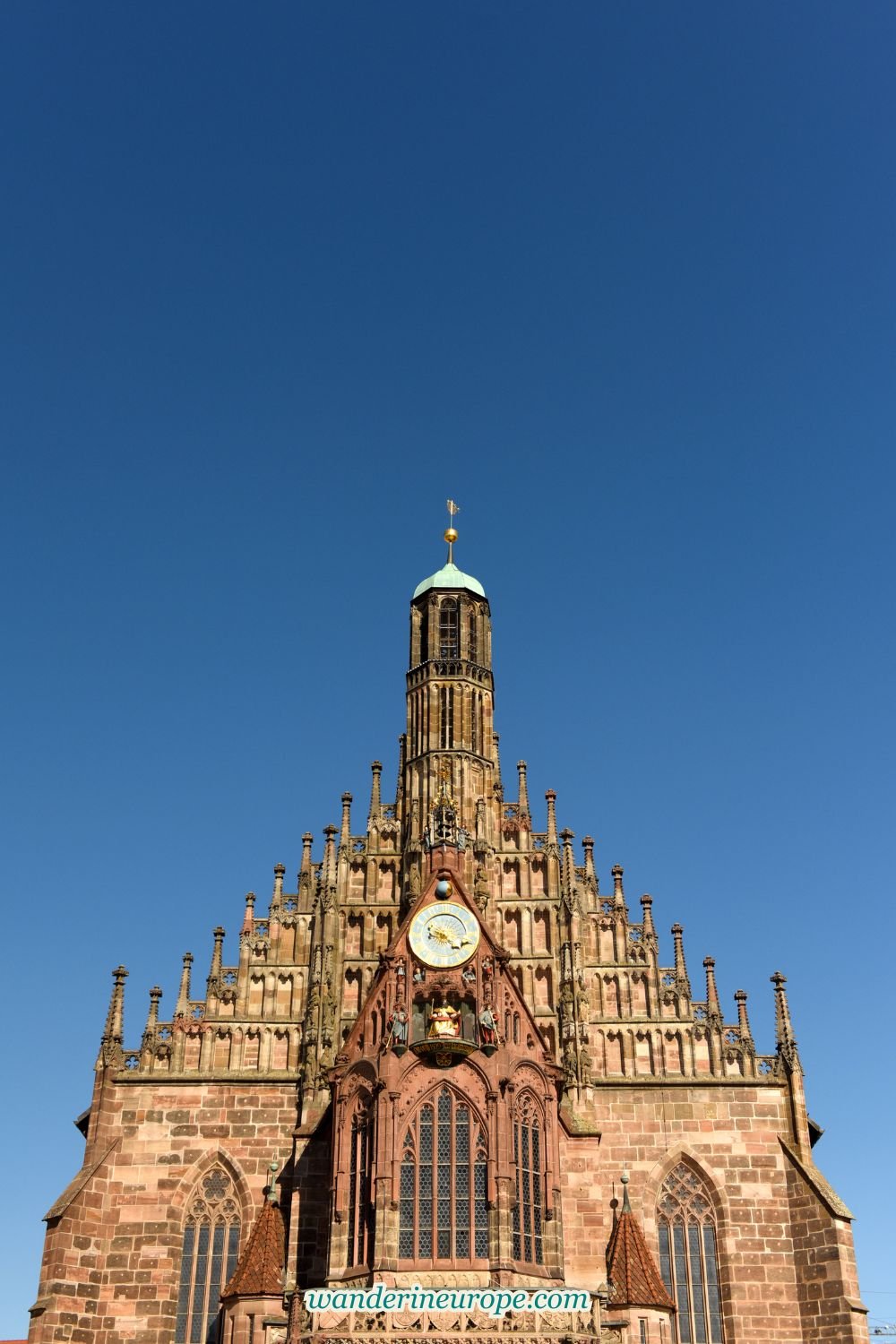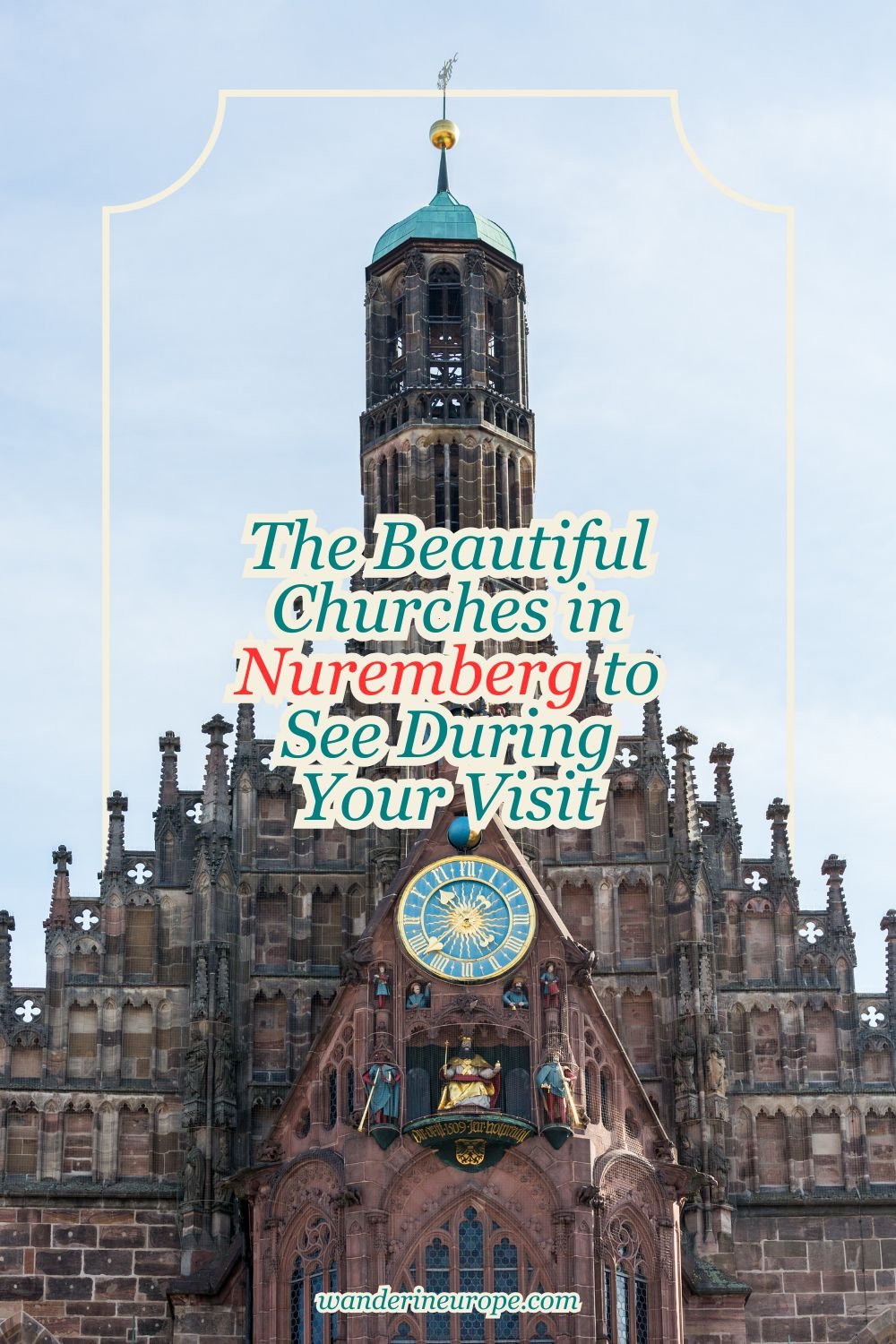The Beautiful Churches in Nuremberg to See During Your Visit
WanderInEurope is reader-supported. Affiliate links and ads help us keep creating useful content for you.
One of the things that really makes Nuremberg such an amazing place to visit is its architecture. The historic center is full of these charming, old buildings that really make you feel like you’ve stepped back in time. And the churches are definitely a big part of that.
There are over 50 churches in Nuremberg, but if you want to see the most impressive ones, you’ve got to check out Sebalduskirche, Frauenkirche, and Lorenzkirche. They’re absolutely breathtaking and home to unique artworks created by famous artists of their time.
Frauenkirche
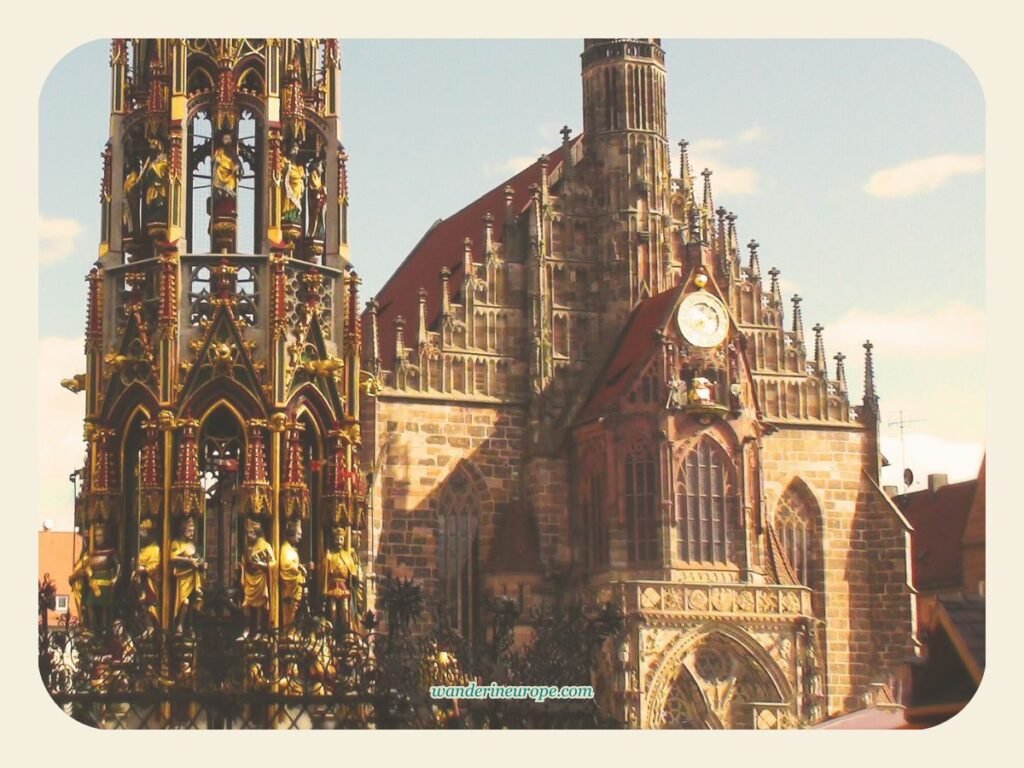

Sebalduskirche
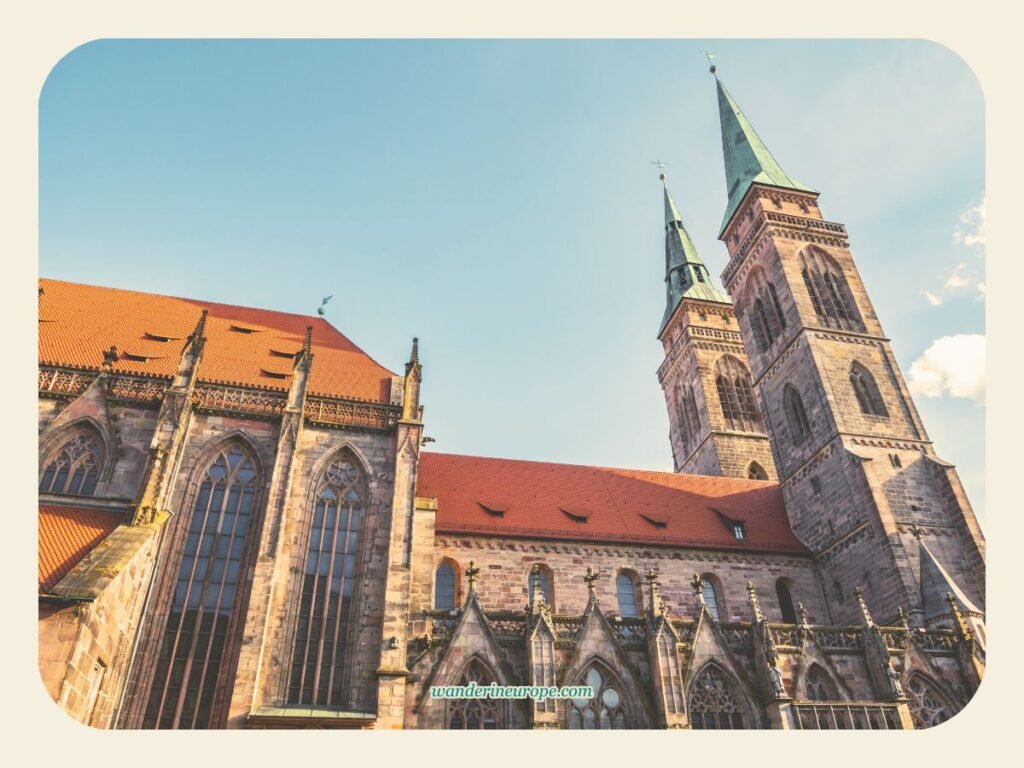

Lorenzkirche
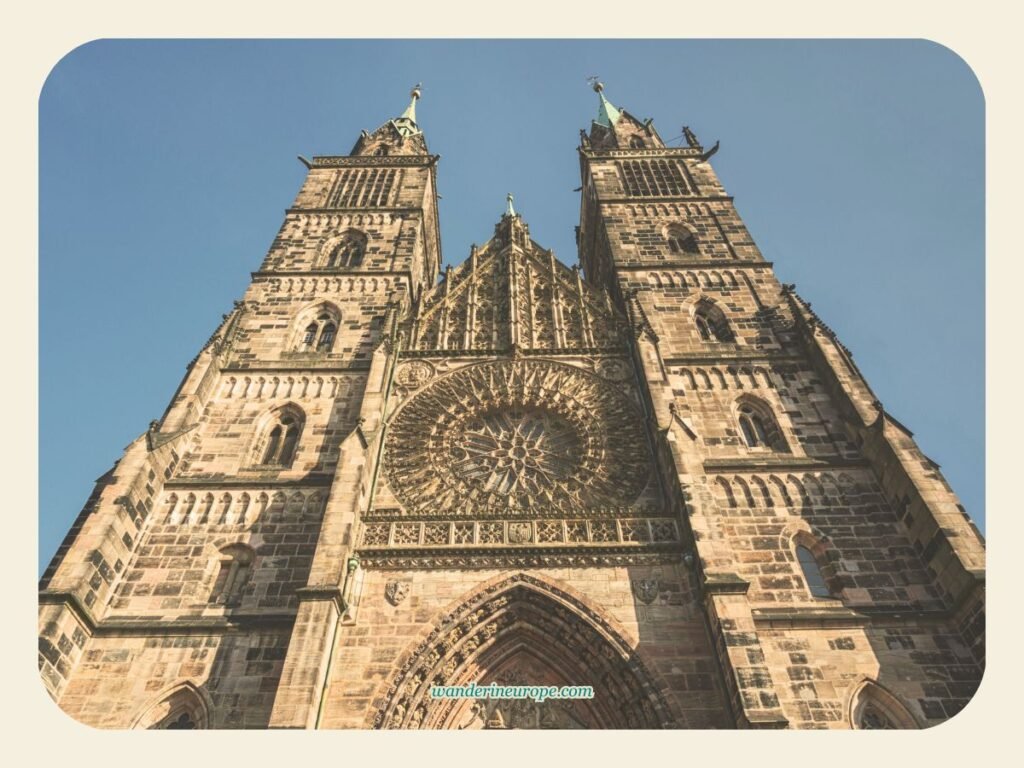

Maximize Your Nuremberg Visit
These churches are just a few of the many amazing spots in Nuremberg that offer unforgettable experiences.
Check out my quick guide to discover the top sights and things to do in the city. I’ll share what you can expect when wandering through Nuremberg’s streets and visiting during special seasons. You’ll also get a sneak peek into the incredible museums and learn about day trips (Bamberg, Wurzburg, and Rothenburg ob der Tauber) if you decide to use Nuremberg as a base to explore Franconia.
If you’re planning a visit, WanderInEurope’s resources will help you:
- the best things to do for first-time visitors,
- how to decide how long to stay,
- three ways to spend a day in Nuremberg,
- a two-day itinerary for any weather,
- a complete three-day itinerary
Enjoy your visit to Nuremberg!
From great hotel deals to skip-the-line tickets and affordable eSim to cheap rentals, click here for the best hotel deals and more travel discounts.
For a convenient, unique, or more enriching visit, check out these experiences and services:


Pin this to save it for later or bookmark it to read anytime.


